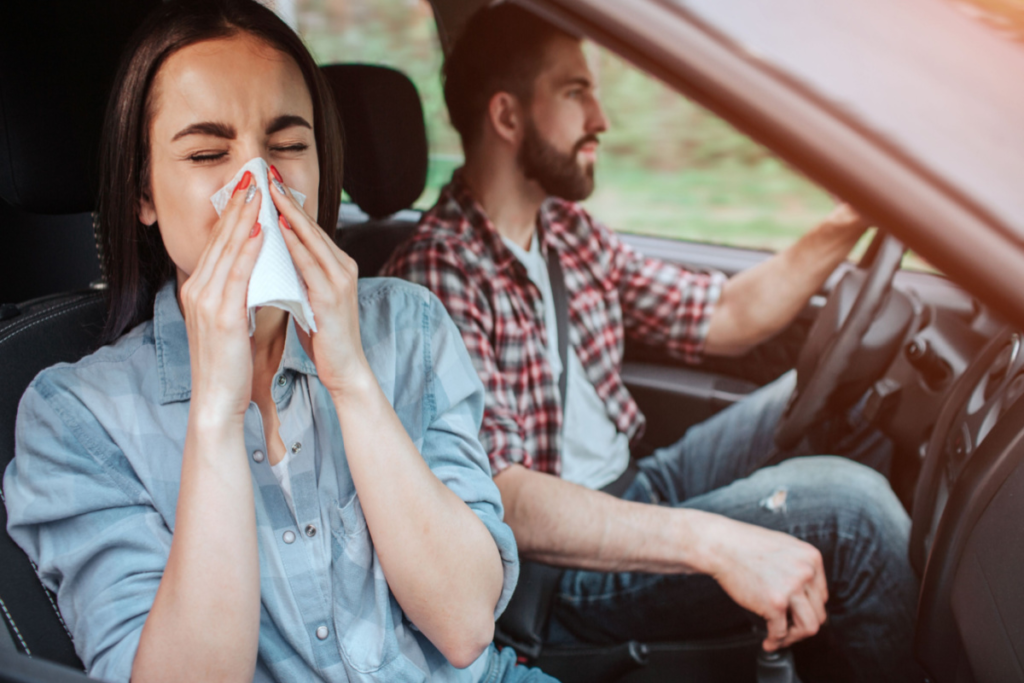5 mistakes drivers with hayfever are making – and how to solve them

1. Not wearing sunglasses when driving
If your sunglasses are suitable for driving, and the weather conditions are appropriate, wearing sunglasses can prevent pollen from getting into your eyes as you’re driving. While it’s not completely foolproof, it does stand to reason that having a barrier such as glasses or sunglasses over your eyes will stop a good portion of pollen from entering your eyes.
If your standard sunglasses aren’t doing the trick, there are specialist frames designed for hayfever sufferers that have an additional, discreet clip-on shield to cover pollen entry points from above and around your eyes.
2. Not vacuuming inside your car
If your car is full of pollen and dust, as soon as you turn up your air-con, the particles will inevitably circulate and trigger any allergies. Make sure to regularly vacuum carpets, mats and upholstery and dust surfaces including the windows and dashboard to get rid of any lingering dust and pollen before you begin your journey.
3. Having a clogged pollen filter on the air con
Most modern cars have a pollen filter fitted to their air con and ventilation systems. A pollen filter will stop dust and pollen particles from coming through the air-con vent and straight into your car’s cabin, but if this filter becomes clogged you can still expect pollen and dust to make it through when you use your air-con.
The cabin filter has a short life span, so it’s worth changing your air filters regularly. The good news is that you don’t need to take your car to a garage to do this – you can grab replacement filters from motoring retailers found on the high street and it’s fairly simple to replace them yourself. It should take no longer than 15 mins, and depending on car type, you can pick up a new filter for £10. Bear this in mind during the summer months to make sure that your air con isn’t making your hayfever worse.
4. Driving with the windows down
If the pollen is outside, don’t invite it in! Keeping your car windows closed is the most effective way of keeping pollen particles outside of your car. Aside from inviting pollen into the cabin of the car, having the windows open while driving can mean that pollen can fly directly into your eyes making hayfever symptoms even worse. If the weather’s warm, rely instead on air-con with a fresh pollen filter to keep you cool rather than opening the windows.
5. Forgetting to take (non-drowsy) hayfever medication
While it may feel logical to dose up on hayfever medication before leaving the house, be aware of the medical risks. Some antihistamines used in hayfever medication can cause you to become drowsy and could even cause you to fail the driving drug test in extreme cases. Always check your hayfever medication to make sure that it doesn’t cause side effects that could impair your ability to drive safely.
Andrew Marshall, Marketing & Partnerships Manager at Carmoney says: “During the summer months, air con in your car is a must if you want to stay comfortable on your journey. But before you turn up the power to full, consider your seasonal allergies and consider ways to reduce triggering symptoms. A poor-performing air con system can draw pollen, dust and other airborne particles from the outside into the vehicle – and amplify your allergies in the process. We would recommend keep your car free from dust and lingering pollen by hoovering the interior thoroughly, changing the air con filters, wearing wraparound sunglasses and taking your hayfever medication before long journeys this summer.”




